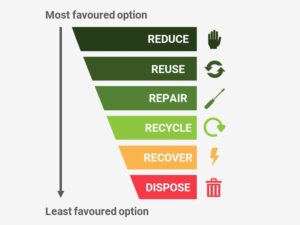Alistair Howard, Director of Production, The Collective by BCD Meetings & Events, shares some of the key considerations for delivering more sustainable events from a production point of view…
Sustainable events – the words on everyone’s lips, but an area where the industry has still got such so much groundwork to do. The production element of any event is often the most environmentally damaging, but this is also the area we can make the biggest change. From understanding the lifecycle of our materials right from the outset through to our supply chain choices, we can look to considerably reduce the environmental impact of our brand experiences. From a production standpoint, we have to make an array of decisions throughout the event to help improve environmental sustainability – right from event concept through to maintaining material circularity value.
Here at The Collective, this always starts with our initial client conversations, as this may affect budget, supplier choices and the overall design of the event. If we were to think about every touchpoint from proposal through to de-rig, we have multiple areas to consider.
- Preventing landfill through our event design
- Sustainable raw material sourcing
- Supply chain impacts and accreditations
- Minimisation of transport distances
- Protection of event production materials from damage
- Understanding of item disposal, recycling or reuse
Each of the above should be discussed during the early stages of pre-production and at the forefront of Production Managers minds when designing environments. By making every effort to move from a linear economy to a circular economy, we can help to keep production materials at their highest value for as long as possible.
Increasing the lifecycle of our event materials
Sustainability is, of course, high on all client’s agendas, but this priority is often focused on minimising the carbon footprint, digitising materials, and the use of sustainable elements. However, less weight is placed on the lifecycle of production materials. Whilst all set materials should still come from sustainable sources, if we ensure they also can have a life beyond the event itself, we can help to avoid single-use sets often ending up in landfills.
Start by considering whether you can give the event materials to the local community. Does the client have charity connections in the event location? Are there local theatre groups, art organisations or schools that might be able to use the items? In particular, elements such as draping, carpet, bar units etc. may be gratefully received by local businesses. Speak to the original suppliers of the materials to see if they have any other events where elements of sets can be re-used. Any ‘re-sale’ contributions could also be made to charity partnerships. Understanding all these options during the planning stage will play a big part in your event design.
Adopt the waste hierarchy model from the start

* London School of Economics
Having teams adopt the ‘waste hierarchy’ in the pre-production stage is great practice.
This will help to flesh out where in the event design existing materials from previous events can be used, or which staging elements can be designed purposefully for reuse. At concept stage consider questions such as
- Instead of purchase, are hire services available?
- Can the element be re-used for multiple events?
Building a more sustainable supply chain
Material choices during the pre-production stage are key. Elements such as vinyl banners are in the single-use plastic category unless they are reusable or allow for changeable elements. Is a recycled version available? And how can you create the lowest possible carbon footprint over the lifecycle of the element?
Printers across the board are having to make big changes to be more sustainable, but it’s still worth arming yourself with the right questions when working with your supplier.
- Are the inks and finishes they use compliant with recycling requirements?
- Can natural dyes by used where possible?
- Are printing and cutting done to minimise waste and off-cuts?
When production elements are in use during the event, there are still multiple areas that need to be considered to help increase the lifecycle of the product
- How can the production element be protected from damage so that it can be reused?
- Can it be created without adhesives, to allow for reuse?
- Is the item modular, allowing for replacement of damaged parts?
The above just scratches the surface of what we need to consider to deliver more sustainable events from a production point of view. But by building in these questions and considerations throughout the entirety of our planning and delivery process, we can work towards creating less environmentally impactful events.

